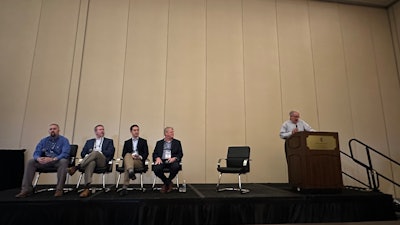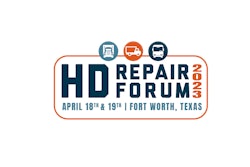
If you’re looking at training from a place of fear of losing your techs, you’re doing it wrong, a panel at the SOLD! session of Heavy Duty Aftermarket Week 2023 said.
You shouldn’t be afraid of trained techs leaving. You should be afraid of untrained techs staying.
“Any tool is only as good as the hands that it’s in,” says George Arrants, vice president of the ASE Education Foundation and moderator of the panel. “And sometimes, that’s a problem.”
This is true if you’re talking about future vehicles such as EVs, or today’s increasingly complex internal combustion engines, says the panel, which included Jack Chung, vice president of product management at Noregon Systems; Ben Johnson, director of product management at Mitchell 1; Greg Reinmuth, president of Triad Diagnostic Solutions; and Tyler Robertson, founder and CEO of Diesel Laptops.
“Fundamentally, today, when I got into a shop, they can’t diagnose and fix it correctly,” Reinmuth says, adding that pre- and post-repair scans are important, leaving the technicians without the data they need to properly diagnose the vehicle in their care. Furthermore, the technicians aren’t using the diagnostic tools they have to their full capability.
Continuing education can help with that, the panel agreed.
“There’s not a lot of opportunity for today’s diesel technicians to get continuing education,” Robertson says. “It’s a black hole. It is very hard to get independent shops to say they’re going to invest, buy some courses and lose a technician for a week when they’ve got 20 trucks and a backlog.”
Arrants gave an example of a multimeter. Of the 10-12 positions on it, most technicians only use two.
“The truth of the matter is these products don’t make you guys any more money,” Robertson says. “What does are the people using it.”
There is also a reliance on OEM software that the panel says isn’t necessary. Reinmuth says to only use OEM software narrows a technician’s vision whereas an all-mix diagnostic tool looks at the full spectrum of parts on the truck. Proper training can help techs use those tools to more quickly and efficiently diagnose and repair trucks, putting them back on the road more quickly and safely.
“The bottom line is we have the tools and they’ve gotten much better, but if the technician doesn’t know anything about the system they’re trying to diagnose, at the end of the day, they’re just educated parts-replacers,” Johnson says. “I would wholeheartedly agree with the sentiment here that training is critical. If you can’t figure out what training you want, electrical is critical.”









